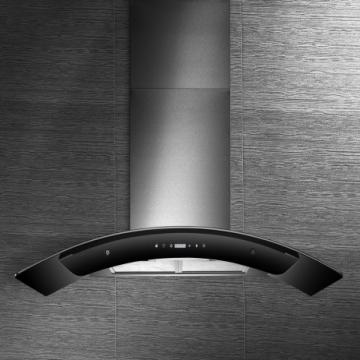According to forecast, China's LED indoor lighting output this year will increase by 110% compared with the same period last year. The "First Financial Daily" reporter recently learned that in 2012 China's LED indoor lighting output value reached more than 300 billion yuan, that in 2013 the market size will reach 63 billion yuan.
With a professional R & D team, the company has applied for 296 patents and 231 granted patents, including 43 invention patents. With a high technical qualification, the company has participated in the development of 14 national and industrial standards and organized several industry technical interchange meetings
Extractor Hood,Durable Swift Cooker Hoods,Kitchen Extractor Hood,Auto Clean Range Hoods Xunda Science & Technology Group Co.ltd , https://www.xundatec.com
Looking forward to the advent of LED lighting era, but the manufacturers are not full, and some pockets are more obtrusive. The market was not as optimistic as expected at the beginning of the year. Revenue growth was not as much as imagined, but profits were getting thinner and thinner.
However, during the three years from 2010 to 2013, the average annual decline in the price of LED lighting products exceeded 20%. This has not only led to the rapid growth of the LED lighting market, but also brought tremendous pressure on the LED industry with excess capacity. Judging from the performance of the domestic LED listed companies in the third quarter of 2013, “increasing income without increasing profits†has become a common problem faced by LED upstream and downstream companies.
Experts predict that in the next five years, especially in the next three years, big fish will eat small fish and fast fish will eat slow fish. The “shuffle†of the Chinese LED industry will really come.
The era of LED lighting
Compared to 2012, this year LED lighting market has been warmer, orders have increased significantly. Experts predict that China's upstream and downstream output value of LED will reach 263.8 billion yuan this year, an increase of 28% year-on-year. The output value of the LED industry will exceed 320 billion yuan next year, of which the production value of the application field will account for about 70%, and indoor and outdoor lighting will account for one of them. A large proportion.
However, from the performance of listed companies, in the first three quarters of this year, BDO Runda, one of the LED chip giants, earned 2.27 billion yuan, an increase of 17% year-on-year; net profit was 50.27 million yuan, a year-on-year drop of 56%.
In the first three quarters of this year, Ruifeng Optoelectronics, a large-capsule manufacturer, realized operating revenue of 500 million yuan, an increase of 48% year-on-year; net profit was 45.41 million yuan, a year-on-year increase of 25%. Ruifeng stated that due to the increase in R&D investment, the significant increase in staff salaries and equity incentive expenses and office expenses, and the fierce competition in the industry, the gross profit rate of products has declined, and the increase in net profit has been lower than the increase in sales revenue.
Another packaging company, Hongli Optoelectronics, had revenues of nearly 500 million yuan in the first three quarters of this year, an increase of 24% year-on-year; however, net profit was 36.5 million yuan, down 19% year-on-year.
The same applies to the application. In the first three quarters of this year, Qinshang Optoelectronics had an operating income of 800 million yuan, a year-on-year increase of 35%; a net profit of 87.85 million yuan, a decrease of nearly 5% from the same period last year; net profit after deducting non-recurring gains and losses of 86.68 million yuan, a year-on-year decrease of nearly 4%.
Why is it that increasing revenue does not increase profits? Overcapacity and fierce price competition are one of the main reasons. "This year, the price of LED chips has dropped by 20% to 30%," Wang Lianghai, vice president of Tongfang, told this reporter that Tongfang's LED chip business is more difficult in the first quarter of this year and began to improve at the end of the third quarter. Due to overcapacity in the industry, Tongfang’s LED chip production base has a planned production value of nearly 3 billion yuan, and now only achieves 30% of the target. "It will take a year or two for the LED industry to be completely improved."
While fierce market competition, the other side is R&D and rising labor costs. "The cost is huge," said Li Guoguang, chairman of Hongli Optoelectronics.
The reduction of government subsidies is also one of the important factors. For example, Qinshang Optoelectronics obtained government subsidies of about 2.43 million yuan in the first three quarters of this year, which is 70% lower than last year's more than 11 million yuan. "The gradual maturity of the industry and the reduction in government support are inevitable trends," said Zhu Bingzhong, deputy general manager of QinShang Optoelectronics.
In addition, in order to expand the civilian LED lighting market, investment in channel construction is large, which also affects the performance. Zhu Bingzhong stated that engineering lighting is a traditional advantage in lighting, and the layout of channels for civilian lighting is focused on the medium and long-term, and the benefits will be in the future.
Industry reshuffle in the next five years
It is now like the darkness before dawn, the integration of China's LED industry has been in full swing.
"In the next five years, the industry will shuffle," experts boldly predicted that China's local chip factory will ultimately survive no more than 12, most of the upstream companies die, survival rate is about 30%. There are 1750 midstream packaging plants, and only 40% of them will survive in the future. The death rate of tens of thousands of LED lighting companies in the downstream will also exceed 50%.
This is not alarmist. The vertical and horizontal alliances are continuously being staged. In particular, the upstream chip factory will accelerate its penetration into the downstream, and it will be the competition between supply chains in the future.
At the end of last year, BDO Runda had a strong alliance with NVC Lighting, becoming the latter's major shareholder. In the first half of this year, NVC's performance improved, with revenue of 1.689 billion yuan, up 4.6% year-on-year; net profit of 81.24 million yuan, up 92.3% year-on-year; LED sales revenue was 282 million yuan, an increase of 233.9% year-on-year. Recently, DHL and NVC plan to spend 80 million yuan to form a joint venture to build a packaging plant.
Another LED chip giant, Sanan Optoelectronics, acquired 19.97% of the shares of Taiwan Yuyuan Optoelectronics for NT$2.352 billion. This October, it was a successful "closed" and became the largest shareholder of Haoyuan. Recently, Sanan and Sunshine Lighting have established a joint venture to jointly develop LED lighting products and jointly develop LED lighting channels.
Tongfang has already established a strategic cooperative relationship with Hongli Optoelectronics. Li Guoping said that before 80% of Hongli’s chips were made with Taiwanese or foreign brands, 90% of them are now made with domestic chips. Wang Lianghai said in a sympathetic manner: "In the year when we both cooperated, whether it was on Tongfang or Hongli, we did a lot of work in market development and also seized a lot of markets."
The large package in the middle reaches also extends to the downstream lighting market. Like Mullinson started pushing his own lighting products last year. Lin Jiliang, general manager of Mulinsen Co., Ltd., said that there are now 52 direct sales agent and project agent, 500 county and municipal distributors, and 8,000 terminal retail outlets. With the channels, Mulinsen will further expand the lighting source to the lamps. "We hope that the lamps and bulbs will each have 20 million to 30 million baht in production and sales per month, and that the lamps and lanterns will achieve more than one million per month."
In the downstream, the scent of the LED lighting market was smelted, and LED display companies also traveled to get a share. Zhou Ming Technology spent 4.84 million yuan this year to increase capital in Shanghai Wuyuan, holding the latter's 20.59% stake. Wuyuan has been the sales champion of LED lights for three consecutive years on Tmall. The LED display market is saturated, and the traditional offline lighting channels are dominated by giants such as NVC, Philips, OSRAM, etc. Therefore, Zhou Ming wants to quickly enter the LED lighting field through low-cost emerging e-commerce channels.
As Lin Jiliang said, "The more discovery of (channels), the more difficult it is to engage in." Many LED lighting companies lament that channel input is a swamp. Zhang Xiaofei suggested that in this war-torn situation, we must accurately identify our product positioning, and then choose the matching channel, is to do engineering channels, zero distribution channels, overseas markets or substitutes for workers, otherwise it is difficult to profit. 
August 02, 2020